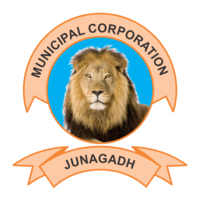
Bruhat Bengaluru Mahanagara Palike (BBMP) is the administrative body responsible for civic amenities and some infrastructural assets of the Greater Bengaluru metropolitan area. It is the fourth largest Municipal Corporation in India and is responsible for a population of 8.4 million in an area of 741 km2. Its boundaries have expanded more than 10 times over the last six decades.

The Mangalore City Corporation is the municipal corporation responsible for overseeing the local administration of the Indian city of Mangalore and it's suburbs, which are a major urban area and the most important port city of Karnataka state. The mechanism of municipal corporation was introduced in British India, with formation of the municipal corporation in Madras (Chennai) in 1688, followed by municipal corporations in Bombay (Mumbai) and Calcutta (Kolkata) in 1762. It consists of a legislative and an executive body. The legislative body is headed by the Mayor, while the executive body is headed by a Chief Commissioner.
The Nashik Municipal Corporation(NMC), is the governing body of the city of Nashik in the Indian state of Maharashtra. The municipal corporation consists of democratically elected members, is headed by a mayor and administers the city's infrastructure, public services and police. Members from the state's leading political parties such as the Nationalist Congress Party, Indian National Congress, Shiv Sena, Bhartiya Janata Party, Maharashtra Navnirman Sena and the Communist Party of India (Marxist) hold elected offices in the corporation. Nashik municipal corporation (NMC) is located in Nashik. Nashik Municipal Corporation has been formed with functions to improve the infrastructure of town.
The Ulhasnagar Municipal Corporation (UMC) is the governing body of the city of Ulhasnagar in the Indian state of Maharashtra. It is part of the Mumbai Metropolitan Region and Thane district (Urban) in Konkan division. It has 78 members. Municipal Corporation mechanism in India was introduced during British Rule with formation of municipal corporation in Madras (Chennai) in 1688, later followed by municipal corporations in Bombay (Mumbai) and Calcutta (Kolkata) by 1762. Ulhasnagar Municipal Corporation is headed by Mayor of city and governed by Commissioner. Ulhasnagar Municipal Corporation has been formed with functions to improve the infrastructure of town.

Mysuru City Corporation (MCC) is the administrative body responsible for civic amenities and infrastructural assets of Mysuru in Karnataka, India. It is the third-largest municipal corporation in Karnataka, serving a population of 1,000,000 in an area of 235 km2. The city's boundaries have expanded more than twice between 2010 and 2020.

Belagavi City Corporation (BCC) is the municipal governing body of the city of Belagavi in the Indian state of Karnataka. The municipal corporation consists of democratically elected members, is headed by a mayor and administers the city's infrastructure and administration. Municipal Corporation mechanism in India was introduced during British Rule with formation of municipal corporation in Madras (Chennai) in 1688, later followed by municipal corporations in Bombay (Mumbai) and Calcutta (Kolkata) by 1762. Belagavi Mahanagara Palike is headed by Mayor of city and governed by Commissioner.
The Parbhani Municipal Corporation is D grade Municipal Corporation of Maharashtra, the governing body of the city of Parbhani, situated beside the Collector Office, and District Court. The municipal corporation consists of democratically elected members, is headed by a mayor and administers the city's infrastructure, public services and supplies. Members from the state's leading various political parties hold elected offices in the corporation.

Municipal Corporation of the City of Hubballi-Dharward or Hubballi-Dharwad Municipal Corporation (HDMC) is the Municipal Corporation responsible for the civic infrastructure and administration of the twin cities of Hubballi and Dharwad, located in North Western part of Karnataka state in India. The organization is known, in short, as HDMC. This civic administrative body administers an area of 213 km2. HDMC consists of 82 elected members from four Vidhan Sabha constituencies of Hubballi-Dharwad. Presently the Council is under suspended animation pending election of new members. There has been a huge demand by people of Dharwad to create a separate civic body and get itself detached by HDMC. Claims are that most of the funds are allocated to Hubballi solely.

Shimla Municipal Corporation (SMC) is the municipal corporation of Shimla, the capital of Himachal Pradesh, and is the chief nodal agency for the administration of the city. Municipal Corporation mechanism in India was introduced during British Rule with formation of municipal corporation in Madras (Chennai) in 1688, later followed by municipal corporations in Bombay (Mumbai) and Calcutta (Kolkata) by 1762. Shimla Municipal Corporation is headed by Mayor of city and governed by Commissioner. Shimla Municipal Corporation has been formed with functions to improve the infrastructure of town.

Tirupati Municipal Corporation is the civic body that governs the city of Tirupati in the Indian state of Andhra Pradesh. It is one of the three corporations in the state, alongside Kakinada and Visakhapatnam to feature in Smart City project. Established in the year 2007, the executive power of the TMC is vested in the Municipal Commissioner, an Indian Administrative Service (IAS) officer appointed by the Government of Andhra Pradesh. The position is held by Anupama Anjali. Dr. BR.Shirisha Yadav (YSRCP) was elected as the Mayor and M.Narayana (YSRCP) as the Deputy Mayor by the newly elected general body in March 2021.Municipal Corporation mechanism in India was introduced during British Rule with formation of municipal corporation in Madras (Chennai) in 1688, later followed by municipal corporations in Bombay (Mumbai) and Calcutta (Kolkata) by 1762.

Ujjain Municipal Corporation is the governing body of the city of Ujjain in the Indian state of Madhya Pradesh.

Ongole Municipal Corporation is the civic body that governs the city of Ongole in the Indian state of Andhra Pradesh. Municipal Corporation mechanism in India was introduced during British Rule with formation of municipal corporation in Madras (Chennai) in 1688, later followed by municipal corporations in Bombay (Mumbai) and Calcutta (Kolkata) by 1762. Ongole Municipal Corporation is headed by Mayor of city and governed by Commissioner.

Eluru Municipal Corporation is the civic body that governs the city of Eluru in the Indian state of Andhra Pradesh.Municipal Corporation mechanism in India was introduced during British Rule with formation of municipal corporation in Madras (Chennai) in 1688, later followed by municipal corporations in Bombay (Mumbai) and Calcutta (Kolkata) by 1762. Eluru Municipal Corporation is headed by Mayor of city and governed by Commissioner.

Junagadh Municipal Corporation is the civic body governing Indian city of Junagadh. Municipal Corporation mechanism in India was introduced during British Rule with formation of municipal corporation in Madras (Chennai) in 1688, later followed by municipal corporations in Bombay (Mumbai) and Calcutta (Kolkata) by 1762. Junagadh Municipal Corporation is headed by Mayor of city and governed by Commissioner.

Srikakulam Municipal Corporation is the civic body that governs the city of Srikakulam in the Indian state of Andhra Pradesh. It was formed as a municipality in the year 1856 and was upgraded to corporation on 9 December 2015. Municipal Corporation mechanism in India was introduced during British Rule with formation of municipal corporation in Madras (Chennai) in 1688, later followed by municipal corporations in Bombay (Mumbai) and Calcutta (Kolkata) by 1762. Srikakulam Municipal Corporation Municipal Corporation is headed by Mayor of city and governed by Commissioner.

Chittoor Municipal Corporation is a civic body of Chittoor in the Indian state of Andhra Pradesh. Municipal Corporation mechanism in India was introduced during British Rule with formation of municipal corporation in Madras (Chennai) in 1688, later followed by municipal corporations in Bombay (Mumbai) and Calcutta (Kolkata) by 1762. Chittoor Municipal Corporation is headed by Mayor of city and governed by Commissioner.

Vizianagaram Municipal Corporation is the civic body that governs the city of Vizianagaram in the Indian state of Andhra Pradesh. The municipality was first constituted in the year 1888 and was upgraded to corporation on 9 December 2015. Municipal Corporation mechanism in India was introduced during British Rule with formation of municipal corporation in Madras (Chennai) in 1688, later followed by municipal corporations in Bombay (Mumbai) and Calcutta (Kolkata) by 1762. Vizianagaram Municipal Corporation is headed by Mayor of city and governed by Commissioner.

Anantapuram Municipal Corporation is a civic body of Anantapuram in the Indian state of Andhra Pradesh. It was constituted as a municipality in the year 1869 and upgraded to corporation in the year 1950. Municipal Corporation mechanism in India was introduced during British Rule with formation of municipal corporation in Madras (Chennai) in 1688, later followed by municipal corporations in Bombay (Mumbai) and Calcutta (Kolkata) by 1762. Anantapur Municipal Corporation is headed by Mayor of city and governed by Commissioner.

The Sangli-Miraj-Kupwad Municipal Corporation (SMKC) is the governing body of the Sangli Metropolitan Region in the Indian state of Maharashtra. It is located in Sangli. The municipal corporation consists of democratically-elected members, is headed by a mayor and administers the city's infrastructure and public services. It was founded on 9 February 1998. SMKC serves an area approximately 118.18 km2 and provides civil services and facilities for more than 6.5 lakh (650,000) people.

Davanagere City Corporation (DCC) is the civic organisation that manages the municipal affairs of Davanagere City in the Indian state of Karnataka. It is the 6th largest Urban Local Body in Karnataka. The town administration of Davanagere city was upgraded as a Municipality in c.1870 and later as a City Corporation on 6 January 2006. The Municipal Corporation mechanism in India was introduced during British Rule with the formation of municipal corporations in Madras (Chennai) in 1688, later followed by municipal corporations in Bombay (Mumbai) and Calcutta (Kolkata) by 1762. It has a territorial area of 68.63 km2 and a population of 4,34,971, as per the 2011 Census of India. The territorial limits of the City Corporation fall under the Davanagere North and Davanagere South legislative assembly constituencies.

















